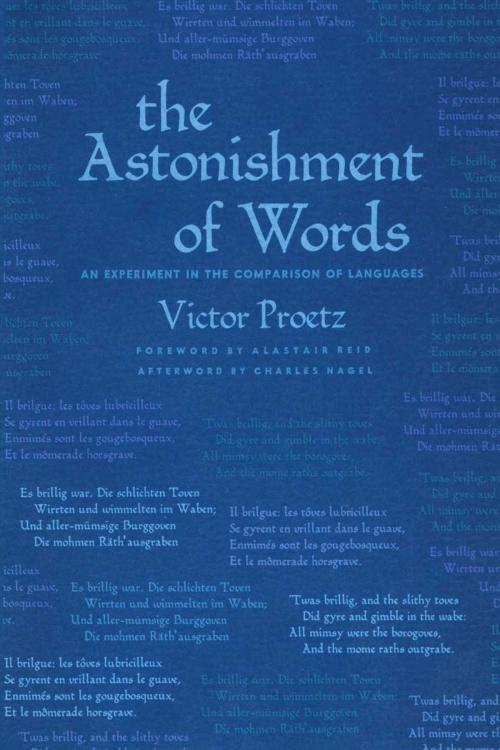The Astonishment of Words
An Experiment in the Comparison of Languages
Nonfiction, Reference & Language, Language Arts, Translating & Interpreting| Author: | Victor Proetz, Charles Nagel | ISBN: | 9780292758292 |
| Publisher: | University of Texas Press | Publication: | August 26, 2013 |
| Imprint: | University of Texas Press | Language: | English |
| Author: | Victor Proetz, Charles Nagel |
| ISBN: | 9780292758292 |
| Publisher: | University of Texas Press |
| Publication: | August 26, 2013 |
| Imprint: | University of Texas Press |
| Language: | English |
One, two! one, two! And through and through The vorpal blade went snicker-snack! He left it dead, and with its head He went galumphing back. Un deux, un deux, par le milieu, Le glaive vorpal fait pat-à-pan! La bête défaite, avec sa tête, Il rentre gallomphant. Eins, Zwei! Eins, Zwei! Und durch und durch Seins vorpals Schwert zerschniferschnück. Da blieb es todt! Er, Kopf in Hand, Geläumfig zog zurück! The late Victor Proetz was by vocation a visual artist who created many distinguished architectural and decorative designs. His favorite avocation, however, was to explore the possibilities (and impossibilities) of words, especially words in translation, and to share his discoveries. As Alastair Reid says in his foreword, "He turned words over in his head, he listened to them, he unraveled them, he looked them up, he played with them, he passed them on like presents, all with an unjadeable astonishment." What, Proetz wondered, do some of the familiar and not-so-familiar works of English and American literature sound like in French? In German? "How," he asked, "do you say 'Yankee Doodle' in French—if you can?" And "How do they say 'Hounyhnhnm' and 'Cheshire Cat' and things like that in German?" And, in either language, "How, in God's name, can you possibly say 'There she blows!'?" This book, unfortunately left incomplete on his death in 1966, contains many of his answers. They are given not only in the assembled texts and translations but also in his wry, curious, sometimes hilarious commentaries. None of it is scholarly in any formal, academic sense—"and yet," Reid reminds us, "his is precisely the kind of enthusiastic curiosity that gives scholarship its pointers."
One, two! one, two! And through and through The vorpal blade went snicker-snack! He left it dead, and with its head He went galumphing back. Un deux, un deux, par le milieu, Le glaive vorpal fait pat-à-pan! La bête défaite, avec sa tête, Il rentre gallomphant. Eins, Zwei! Eins, Zwei! Und durch und durch Seins vorpals Schwert zerschniferschnück. Da blieb es todt! Er, Kopf in Hand, Geläumfig zog zurück! The late Victor Proetz was by vocation a visual artist who created many distinguished architectural and decorative designs. His favorite avocation, however, was to explore the possibilities (and impossibilities) of words, especially words in translation, and to share his discoveries. As Alastair Reid says in his foreword, "He turned words over in his head, he listened to them, he unraveled them, he looked them up, he played with them, he passed them on like presents, all with an unjadeable astonishment." What, Proetz wondered, do some of the familiar and not-so-familiar works of English and American literature sound like in French? In German? "How," he asked, "do you say 'Yankee Doodle' in French—if you can?" And "How do they say 'Hounyhnhnm' and 'Cheshire Cat' and things like that in German?" And, in either language, "How, in God's name, can you possibly say 'There she blows!'?" This book, unfortunately left incomplete on his death in 1966, contains many of his answers. They are given not only in the assembled texts and translations but also in his wry, curious, sometimes hilarious commentaries. None of it is scholarly in any formal, academic sense—"and yet," Reid reminds us, "his is precisely the kind of enthusiastic curiosity that gives scholarship its pointers."















